Hello! This is our first day of OSU’s 2023 Ridge to Reef class.
Our day began by gathering in one of the Palau Community College classrooms where we became acquainted with one another and were introduced to the class curriculum for our two week course. After the briefing we ventured out in the pouring rain to our new form of transportation, the Palau Community College bus.

(Image: Palau Community College Bus)
Our first destination was the Belau National Museum in Koror. Upon entering the first exhibit we noticed that new research had been compiled to exemplify the most up to date information on the monumental earthworks of Palau. This research process was done using LiDAR, these earthworks are the earliest expression of earthen monuments in Oceania.
Upon moving to the upstairs exhibits, we found that the presence of Germans greatly influenced the ecological and cultural environment of Palau. German currency was the first form of foreign currency to be introduced to Palauans. The German Channel was created in the Rock Islands as an easier alternative for passage. This channel was created through means of explosives devastating wildlife. Mixed in with these exhibits were testimonials from Palauan’s who lived during these times.
After exploring the gift shop we stumbled upon a shelf of old license plates. Shuffling through, one of our classmates came across a very familiar logo.

(Image: OSU license plate at Belau Museum)
Our next stop was the Palau National Aquaculture Center. It was here we learned about the complexities of giant clam aquaculture and their species. In the wild a giant clam such as the Maxima can live past 200 years. However, in captivity they can only survive a few decades. Which is why the aquaculture center plants them in the wild. We also learned that clams are identified by their shells and not their colors or lack of colors. Palau was the first to successfully cultivate giant clams in captivity.

(Image: Palau National Aquaculture Center Entrance)

(Image: View of Giant Clam Aquaculture Facility)
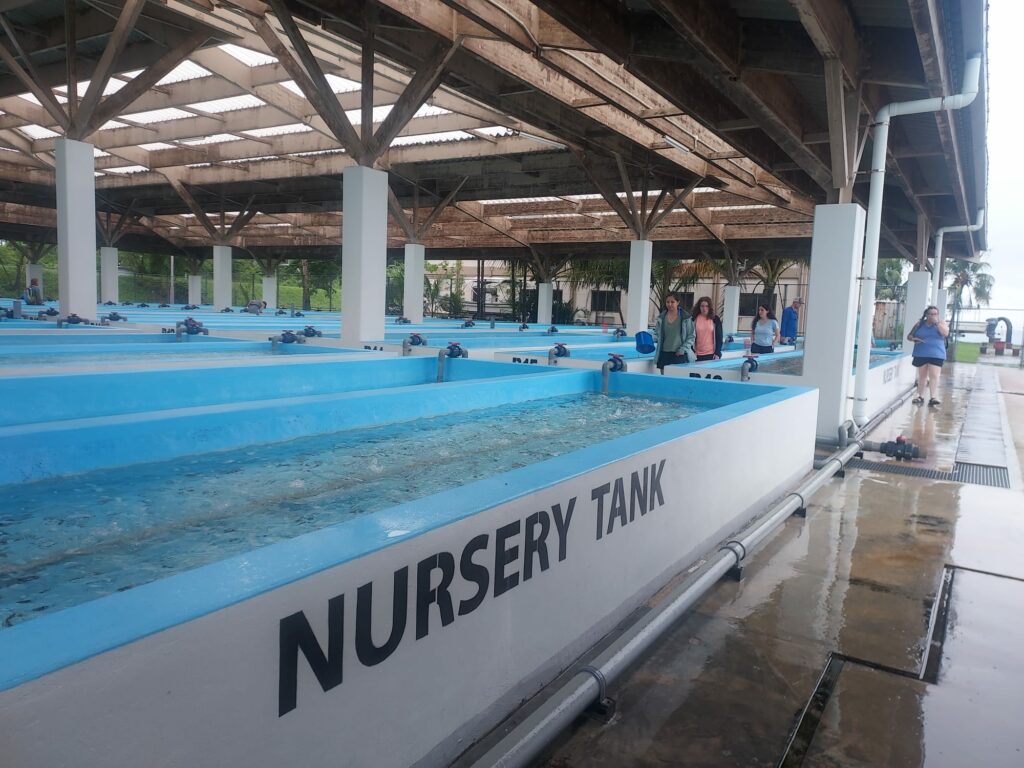
(Image: Nursery Tanks)
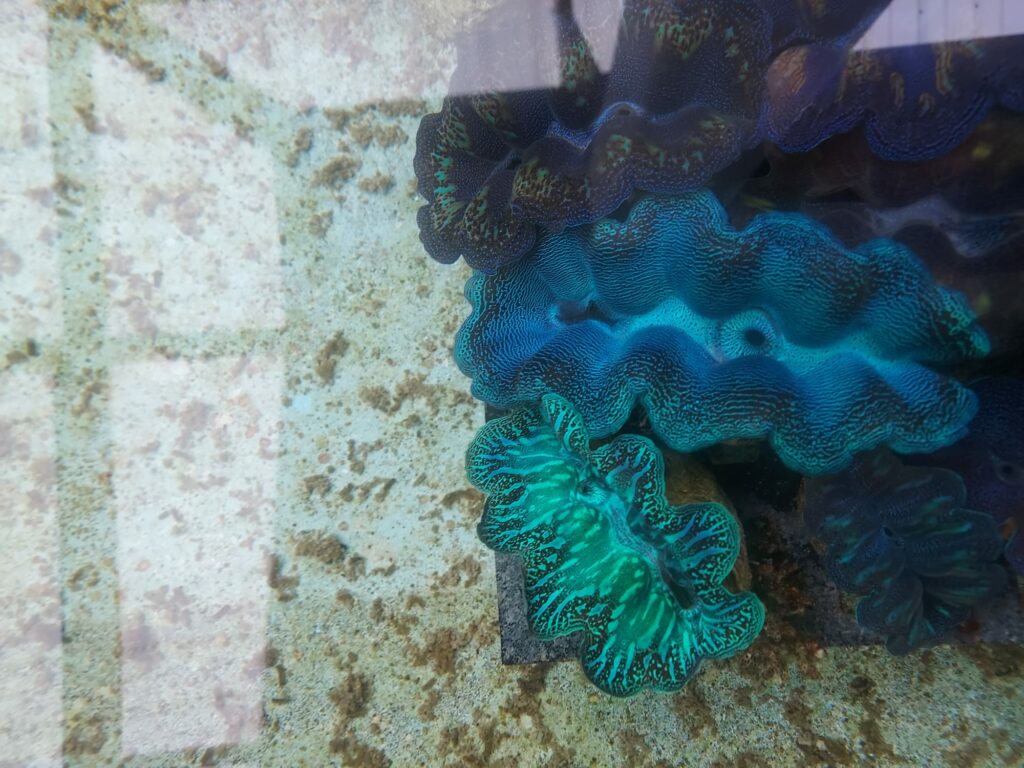
(Image: Giant Clams )
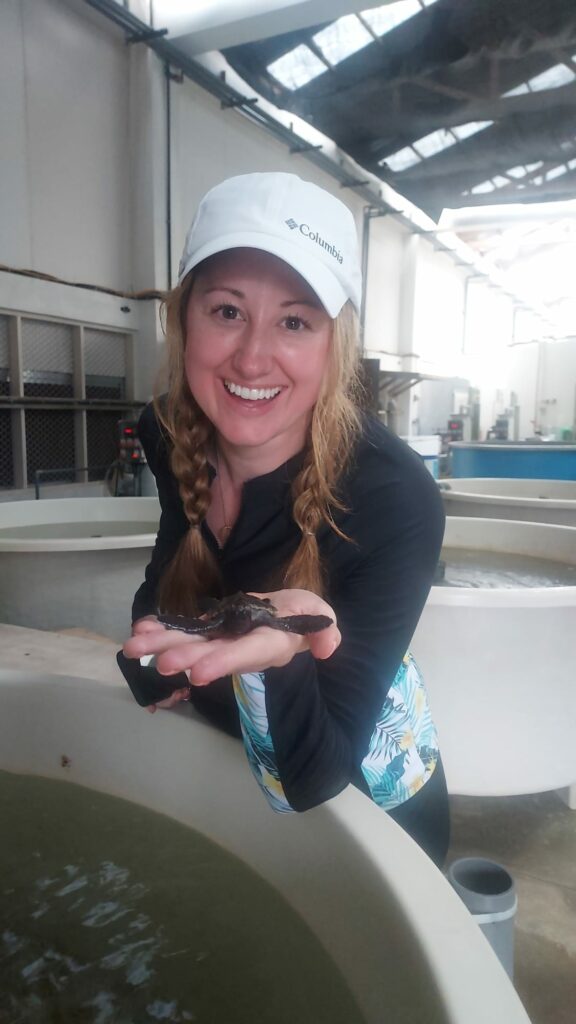
(Image: Hilary (an OSU Student) holding a baby Hawksbill sea turtle)
After the Palau National Aquaculture Center, we made our way to the Palau International Coral Reef Center. At this research institute we encountered chocolate chip sea stars and sea cucumbers in their interactive touch tank.

(Image: Chocolate Chip Sea Star at the Palau International Coral Reef Center)

(Image: Bryan showing Brittney (an OSU student) the chocolate chip sea star)

(Image: Blue sea star)
After this extremely informative and immersive experience we ended our day with an amazing presentation and dinner at Paddling Palau. This presentation built upon what we learned today, and we were given first-hand accounts by Mac, a guide from Paddling Palau. He started the presentation by explaining the culture and history of Palau. He talked about his research projects around the islands and discoveries of new fish species and lakes. His work has been instrumental in protecting Palau and its environment. After the presentation we were graciously treated to a delicious buffet of Palauan cuisine by the Paddling Palau crew. We truly appreciated their hospitality and their willingness to share their knowledge with our class.
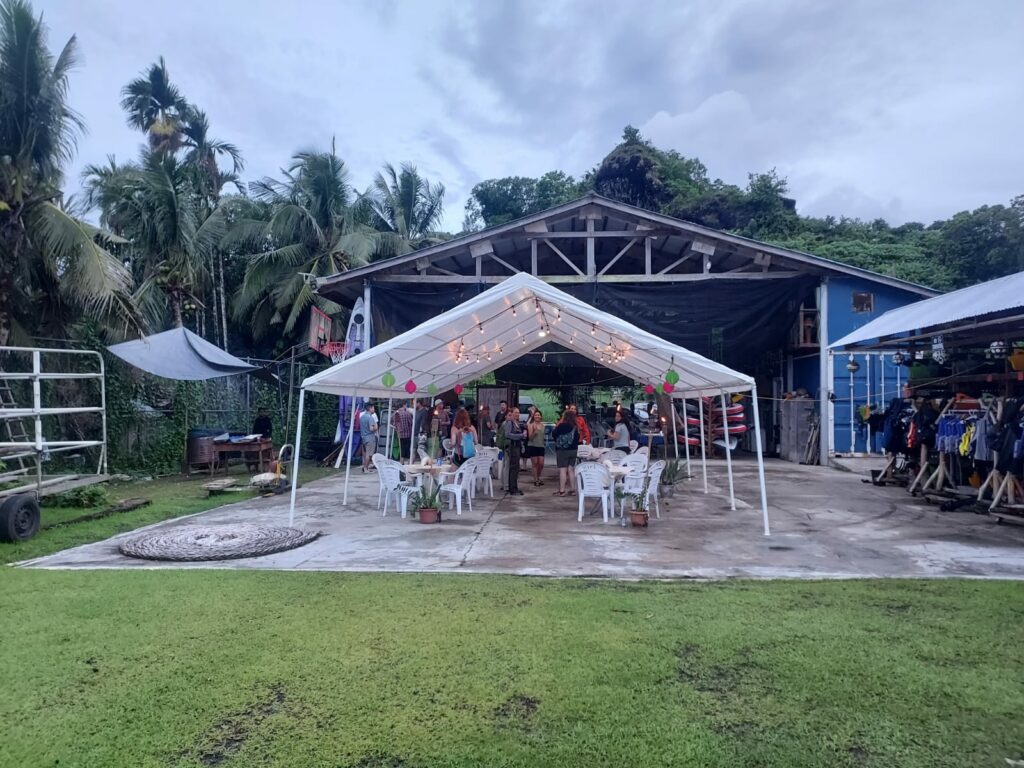
(Image: Students enjoying an evening at Paddling Palau)
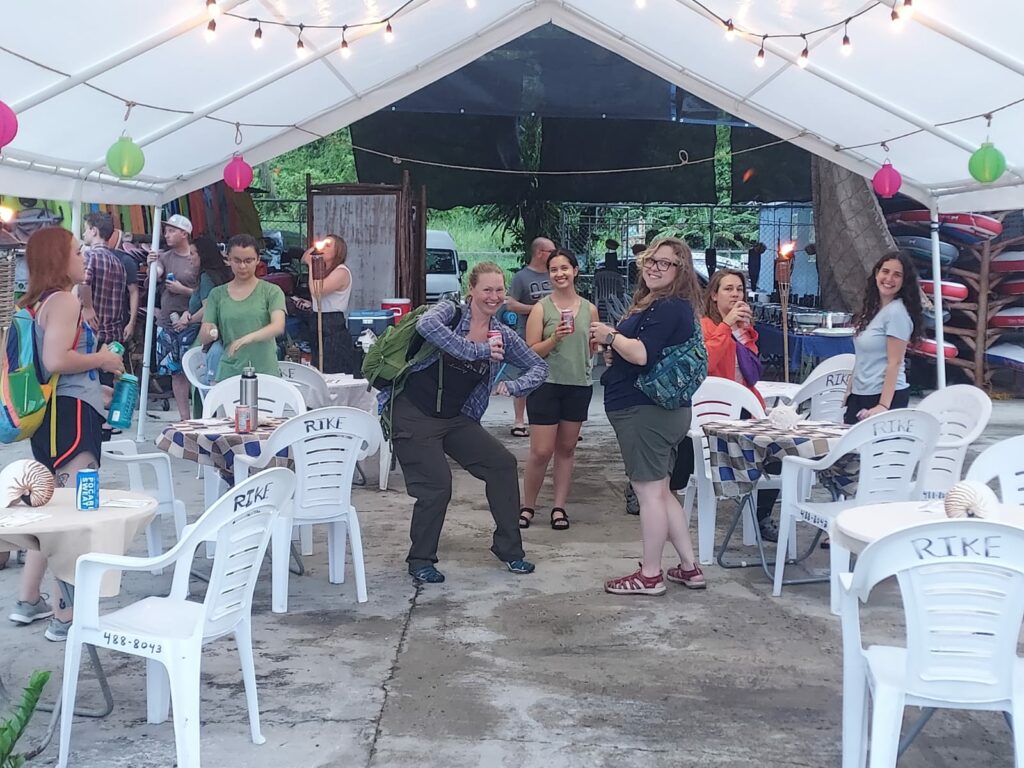
(Image: Students posing for a picture at Paddling Palau)
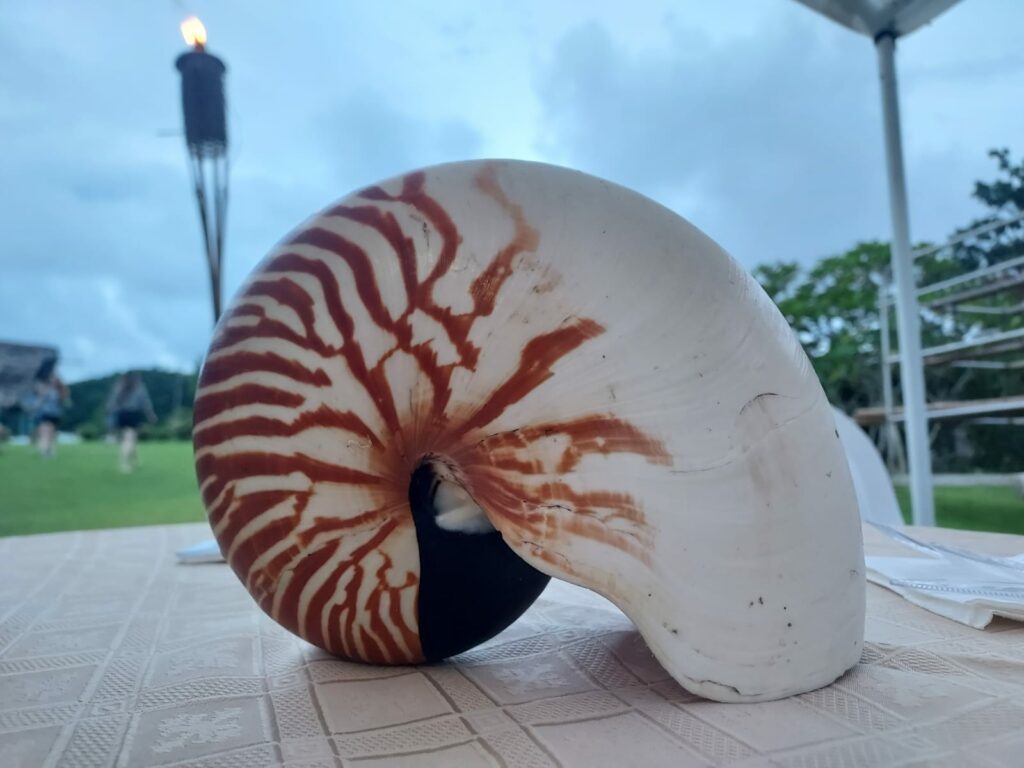
(Image: Chambered Nautilus center piece)
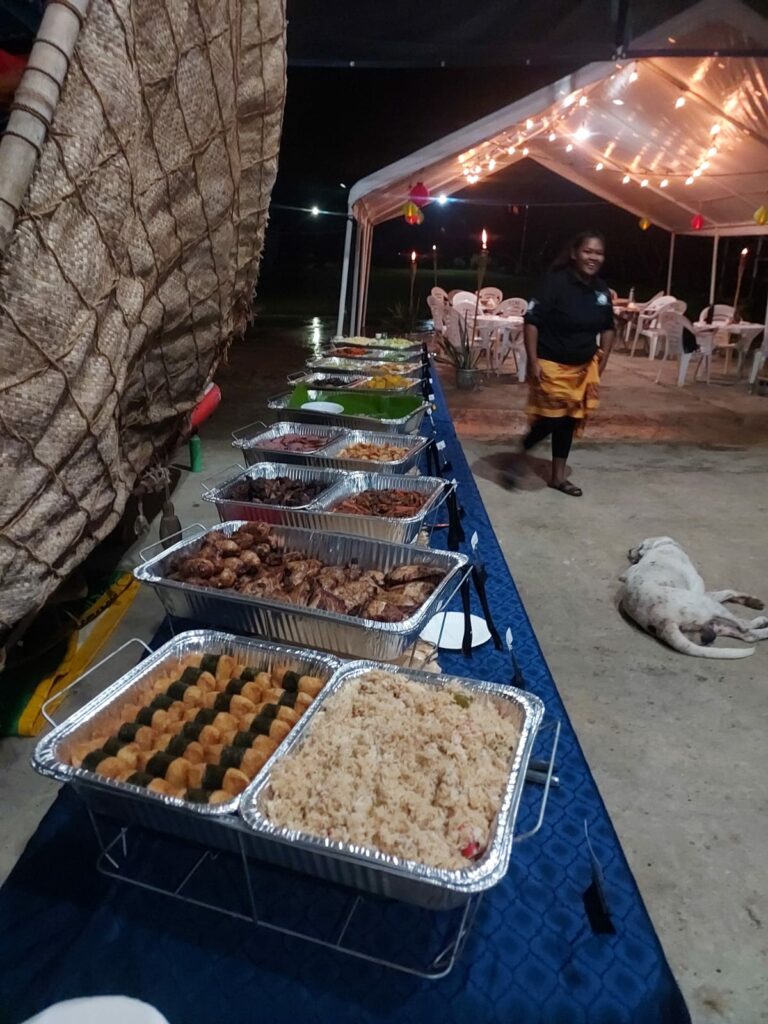
(Image: Buffet presented to OSU students by Paddling Palau)
We ended the day by reflecting in our journals and discussing what we all learned and want to learn more about while on this amazing journey together.
Today’s blog post was written by: Abby van Klaveren and Brittney Collins

